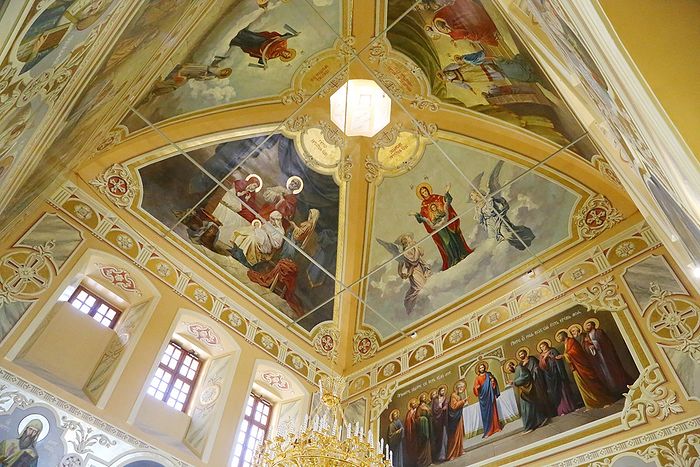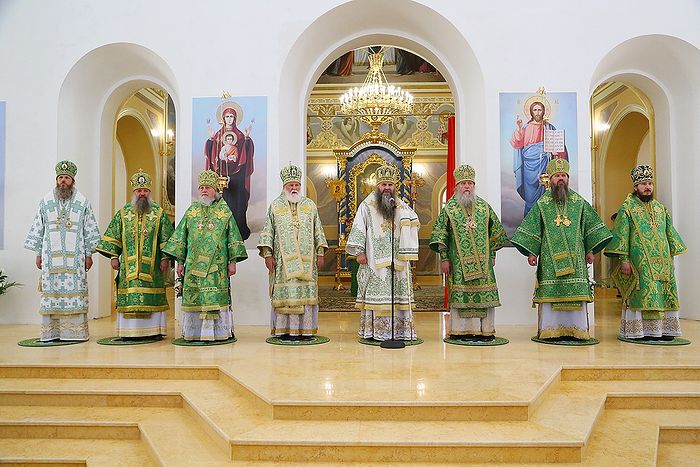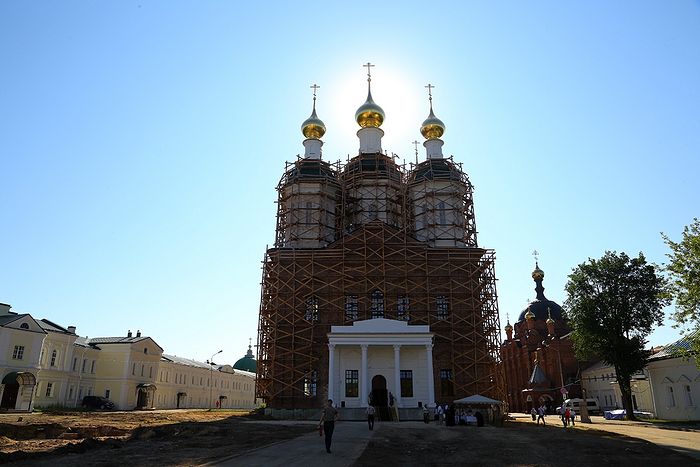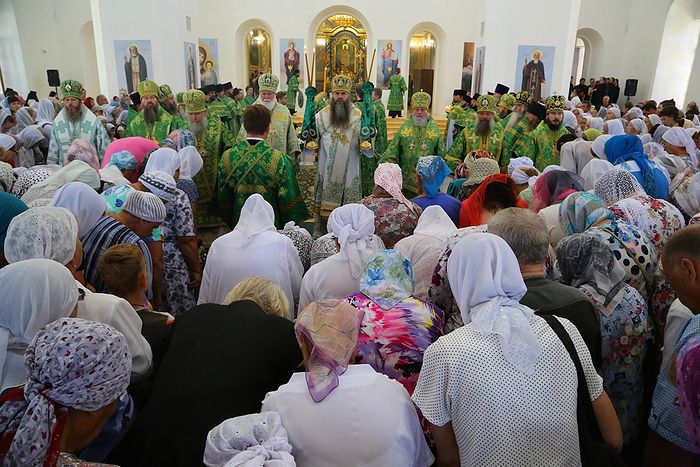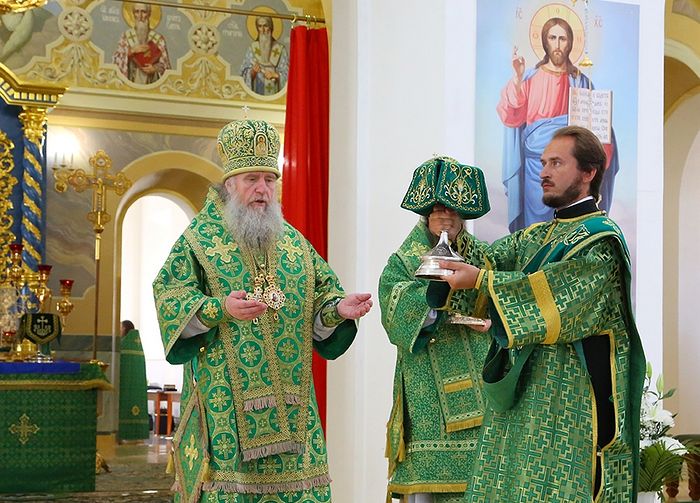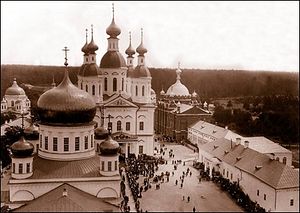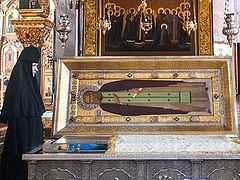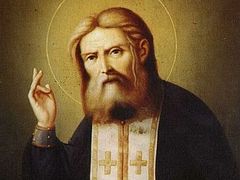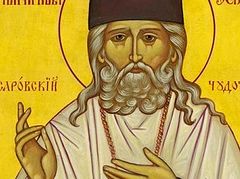Sarov, Russia, August 3, 2018
Eight hierarchs of the Russian Orthodox Church gathered at the Sarov Hermitage yesterday to celebrate the first Divine Liturgy inside the Dormition Cathedral that is currently being rebuilt, reports the site of the Nizhny Novgorod Metropolitanate.
The inaugural Liturgy came on the day of the holy Prophet Elias, the day after the celebration of the opening of the relics and canonization of St. Seraphim of Sarov, the most well-known and beloved monk of the holy habitation. It has been a holy tradition since 2011 for a number of hierarchs to visit the hermitage on the day of St. Elias, the day after the celebrations for St. Seraphim in the Diveevo Convent built by St. Seraphim, where his relics lie in repose. Following the service, pilgrims visit the places of St. Seraphim’s ascetic podvigs. At first, the Liturgy was celebrated in the Church of St. Seraphim, and in 2016 on the site of the future Dormition Cathedral, and this year—inside the cathedral.
The grandiose 200-ft. cathedral, the foundation of which was laid by His Holiness Patriarch Kirill in 2016, is set to be consecrated during next year’s festivities. Restoration will also begin next year of the Church of the Life-Giving Spring Icon of the Mother of God that had also been blown up by the soviets.
The service was led by Metropolitan George of Nizhny Novgorod and Arzamas, with the concelebration of 7 other hierarchs and a number of clergy from other monasteries and the parishes of the Nizhny Novgorod Diocese. The service was also attended by a number of nuns from area monasteries, the local faithful, including students of the Orthodox School of St. Seraphim of Sarov, and a number of public officials.
Following the Liturgy, Met. George addressed the gathered hierarchs, clergy, monastics, and pilgrims:
I congratulate you all with the resurrection of the Church of the Dormition of the Most Holy Theotokos. The famous Sarov Hermitage is named Holy Dormition, but it did not have its Dormition Cathedral. A city street passed throughout the territory of the monastery, and now, by the grace of God and the labors of many people, a new street was built in the city, the road through the monastery was closed, and now the Dormition Monastery sanctifies the God-saved city of Sarov by its holy cupolas with their crosses, which are visible from far away. It is a great consolation and spiritual joy for us. It instructs and enlightens many. The Lord sends visible help through good people. And, of course, it was made possible thanks to the support of “Rosatoma” and the Federal Nuclear Center in Sarov. Many of its scientists and leaders have deep faith, and they take care that we restore all the ruined holy sites. I wish God’s help and that in our hearts would be at least a speck of the zeal for God of the holy Prophet Elias, and a speck of that burning before God which Batushka Seraphim had.
***
Before the revolution, the Dormition Church was known as one of Russia’s most magnificent cathedrals. It was the hermitage’s first stone church and its main church. St. Seraphim’s relics were kept in the cathedral from 1903 until the closing of the monastery in 1925. Construction on the cathedral began in 1930, and it was consecrated on August 25, 1744.
The cathedral was enlarged in 1777 and was distinguished by its 5-tiered carved and gilded iconostasis with Byzantine icons. Many Sarov abbots were buried by the walls of the cathedral, and St. Seraphim was buried on the southeastern side near the altar.
The hermitage was closed in 1925, and the deteriorating cathedral was blown up in 1951. The location of the cathedral and grave of St. Seraphim was later determined by a team of Moscow archaeologists.
A memorial stone on the site of the church was installed in 1991, and in 2002—a cross with a lampadas. In 2004, the chapel over the grave of St. Seraphim, built in the late-19th century, was restored. Restoration of the cathedral began in 2016.
Follow us on Facebook!

